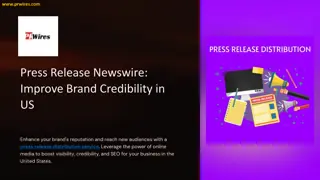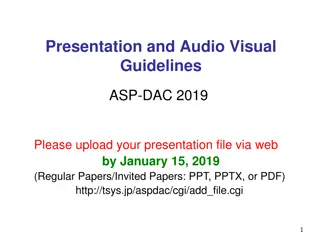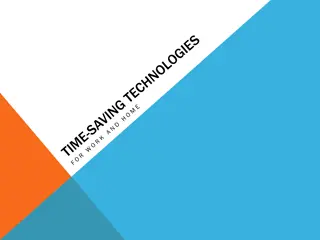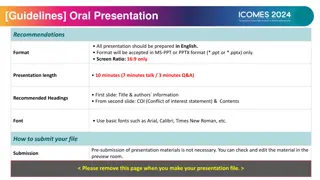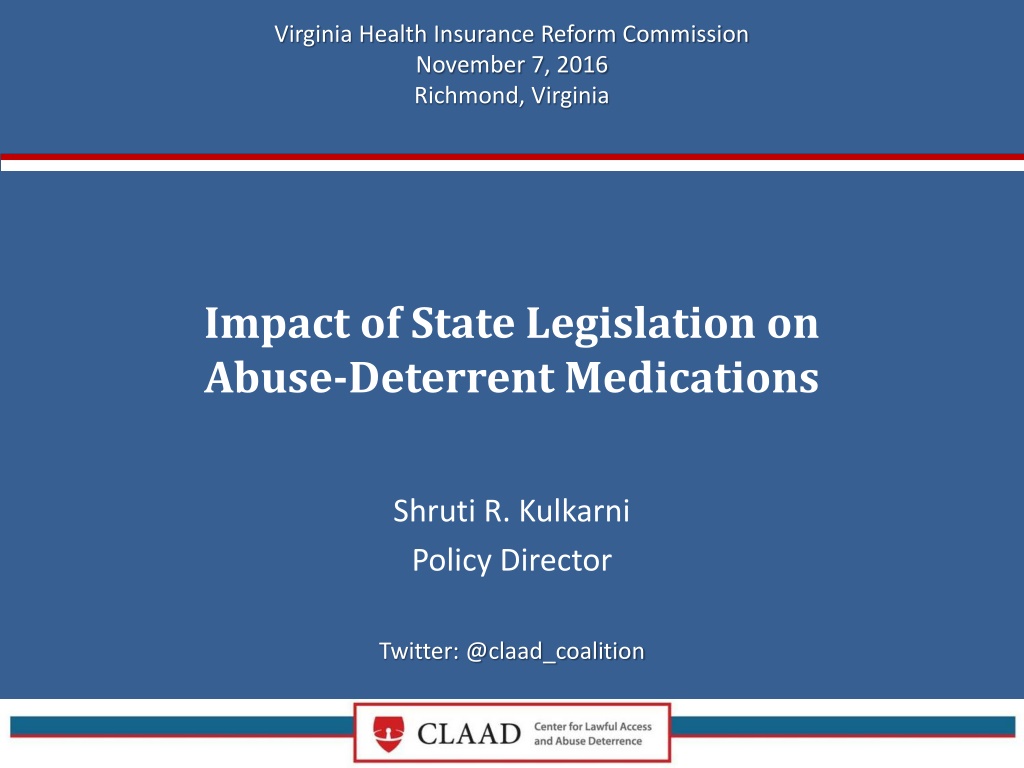
Impact of State Legislation on Abuse-Deterrent Medications in Virginia
Learn about the impact of state legislation on abuse-deterrent medications in Virginia, as discussed by the Virginia Health Insurance Reform Commission in November 2016. Topics include conflict of interest disclosure, a comprehensive national strategy, policy goals, and arguments in favor of opioids with abuse-deterrent properties.
Download Presentation

Please find below an Image/Link to download the presentation.
The content on the website is provided AS IS for your information and personal use only. It may not be sold, licensed, or shared on other websites without obtaining consent from the author. Download presentation by click this link. If you encounter any issues during the download, it is possible that the publisher has removed the file from their server.
E N D
Presentation Transcript
Virginia Health Insurance Reform Commission November 7, 2016 Richmond, Virginia Impact of State Legislation on Abuse-Deterrent Medications Shruti R. Kulkarni Policy Director Twitter: @claad_coalition
Conflict of Interest Disclosure CLAAD s funders include members of the pharmaceutical, addiction treatment, and laboratory industries, and are disclosed on its website, www.claad.org. CLAAD is managed by DCBA Law & Policy. To avoid conflicts of interest, DCBA adheres to the District of Columbia Rules of Professional Conduct 1.7-1.9.
Comprehensive National Strategy Prescriber education (covering all controlled medications) Public awareness and patient counseling, including safe storage and responsible disposal Prescription monitoring programs Prosecution of criminals, rehabilitation of negligent prescribers Overdose rescues, interventions, and referrals to treatment Access to effective treatments for substance use disorder Development, use, and coverage of non-pharmacologic treatments; non-controlled, lower scheduled, and controlled prescription medication with abuse-deterrent properties
Policy Goals: Reduce Unnecessary Exposure to and Risks of Controlled Medications Development and use (when appropriate) of alternatives to commonly abused medications Non-pharmacologic treatments, e.g., virtual reality Non-controlled medications, e.g., biologics Lower risk (lower scheduled) controlled medications Medications with abuse-deterrent properties and novel delivery systems Extended release, immediate release Brand, generic Not just opioids for pain, not just opioids Public and private insurance coverage
Arguments in Favor of Opioids with Abuse-Deterrent Properties Solid Oral Forms Implants and Injectables May not be dispensed to patients for self-administration May reduce opportunities for diversion, misuse, abuse, and accidental exposure May offer continuous medication delivery and greater adherence to medication regimen May improve access and convenience, and help reduce stigma May help prevent unintentional overdose Inexperienced persons who alter route of administration Medical misuse, e.g., crushing to take with apple sauce May be less desirable for abuse Lower black market demand Less often diverted
Arguments Against Coverage for Opioids with Abuse-Deterrent Properties First-generation products do not prevent: Euphoria, addiction Interactions with other substances, e.g.,alcohol All forms of manipulation for abuse or overdose by all means Can cost more than conventional counterparts; currently brand only, not yet available as generics Difficult to isolate public health benefits Relatively slow market adoption Not supported by adequate demand reduction Impacted by price, purity, and availability of illicit substances Are additional opioids coming to market during an opioid overdose epidemic Irrespective in intended safety improvements Despite displacement of conventional opioids in many cases
Arguments in Favor of Coverage of Opioids with Abuse-Deterrent Properties Any reduction in diversion, misuse, abuse, accidental exposure, overdose, or disease transmission is a positive outcome Current opioid analgesics with abuse-deterrent properties may help thwart the trajectory of abuse Individuals who abuse opioids typically start with oral ingestion, move to crushing and snorting, continue to snorting of heroin, and finally, inject prescription opioids and heroin as tolerance develops and it becomes more costly to maintain abuse patterns Individuals who use altered routes of administration are at an increased risk for overdose and the exacerbation of substance use disorders Coverage and use of current products can help fund the development of next-generation products, which could prevent: Euphoria, addiction Interactions with other substances, e.g., alcohol All forms of manipulation for abuse or overdose by all means
State Legislation: Coverage (West Virginia) Applies to: Opioid analgesics (agonists) With FDA abuse-deterrent labeling Insurers shall provide coverage for at least one abuse-deterrent opioid for each active ingredient Cost-sharing for brand name abuse-deterrent opioids shall not exceed the lowest tier for brand name drugs on the plan s formulary Cost-sharing for generic abuse-deterrent opioids covered pursuant to the ADF law shall not exceed the lowest cost-sharing level applied to covered generics Insurers may not require a patient first to use a non-abuse-deterrent opioid before covering an abuse-deterrent opioid on the formulary Preauthorization for a covered abuse-deterrent opioid is permitted if the same requirements are applied to non-abuse-deterrent opioids with the same type of drug release, immediate or extended
Conclusion Thank you Questions and discussion









